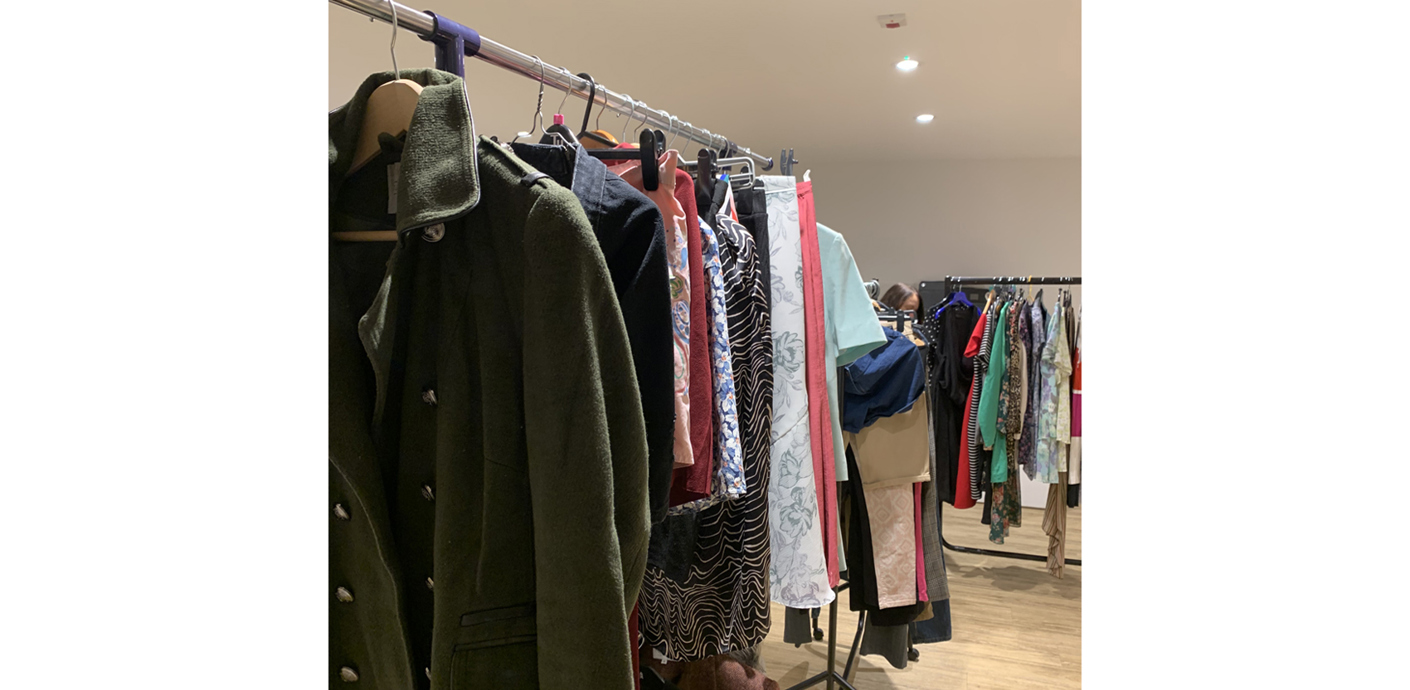How to host a clothes swap and promote textile reuse
Hosting or attending a 'Swishing event' (a clothes swap) is an easy way to update your wardrobe while helping the planet.
With the rise of fast fashion, the average consumer now buys 60% more clothing than they did 15 years ago, according to the UN. If we could reuse or recycle these items, we could save 39 million tonnes of carbon emissions. So, what’s the solution? It’s simple: reuse, repair and recycle!
Here’s how you can raise awareness, promote textile recycling and encourage behaviour change around clothing.
Why textiles don’t belong in general rubbish
Before diving into organising a clothes swap, it's important to understand why textiles should never end up in the general waste - they are a missed opportunity for reuse or recycling.
Many people are unaware of the options available to them, such as bringing old clothing to Recycling Centres or using textile bring banks. By promoting these services, we can reduce the number of textiles ending up in the general waste bin.
Make the most of what you have
One way to reduce waste is by making the most of the clothes you already own. Simple repairs like sewing on a button or patching up a tear can extend the life of a garment. For those who like a bit of creativity, upcycling can transform tired clothes into something new and exciting.
The fun of swishing: A guilt-free way to shop
A swishing event is a guilt-free way to update your wardrobe while helping the environment.
Swishing works like a giant clothes swap: you bring in items you no longer wear and exchange them for something 'new-to-you.' This means no cost to your wallet and no additional burden on the planet.
Start small by hosting an event at home or work, you could even make them a seasonal thing. The more you do them the more people will want to be involved.
How to host your own clothes swap
Preparation and planning
- Find a suitable venue: Choose a space large enough for racks, tables and attendees. You could do this at home or at an external venue. If hosting at an external venue, check if they provide tables, chairs and access to facilities like a kitchen for refreshments.
- Promote the event: Message your friends, post on social media or use local organisations, and Eventbrite to spread the word.
- Decide on acceptable items: Set clear guidelines on what can be swapped, such as good-condition men’s, women’s and children’s clothing, shoes, bags, and accessories. Be clear about items you won’t accept, such as electronics (unless you want to include small electricals in good working order).
- Risk assessment: If you are hosting the event at an external facility, ensure you have a sufficient risk assessment.
Materials
You will need:
- clothes rails
- hangers
- a table for displaying items
- a full-length mirror
- a sheet for tracking the number of items swapped

Optional materials
- Tokens for swapped items (milk bottle tops or buttons work well)
- Signage for categories (for example, sizes and gender)
- Upcycling and repair information for attendees to take away (for example, how to remove stains or sew on buttons)

Day of the event
- Set up: Give yourself some time to set up. Start with the clothes rails and arrange any tables. Hang any clothes by category (for example, men’s, women’s and children’s) and size where possible.
- Signage: If you are hosting at an external facility place clear signs inside and outside the venue to guide attendees.
- Drop-off time: Set a time for attendees to drop off items before the swap begins or allow drop-offs during the event if you think you will have time to sort.
- During the event: Direct attendees to the appropriate areas, ensure items are displayed, and keep the atmosphere welcoming. Count and record items as they are swapped to track the number of textiles diverted from waste.
Closing the event
- Tidy up: Pack away remaining clothes, dismantle clothing rails and clean up.
- Donate leftover items: Organise donations of leftover items to a charity.
- Post-event feedback: Record the number of attendees, volunteers, items swapped and the total weight of textiles diverted from waste. Share this feedback with the attendees or any organisations involved.
Promoting behaviour change
Swishing events aren’t just about swapping clothes - they’re about changing the way we view textiles. By treating clothing as a valuable resource rather than waste, we can reduce the environmental impact of the fashion industry.
Your event might even encourage the attendees to host their own swishing events!
By promoting simple reuse and repair tips, you can help extend the life of textiles, reduce the demand for new clothes and cut down on waste. Every small change adds up and together we can make a big impact!
Happy swishing!
